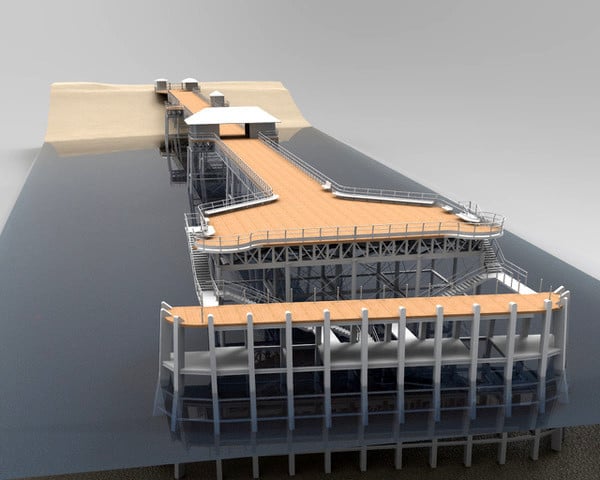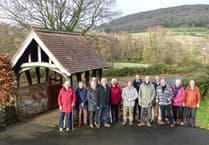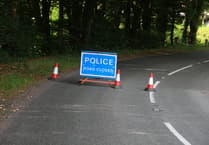MINEHEAD Pier has the distinction of being the only pier in England to be dismantled during the Second World War. The War Office decided that it had to come down so that guns on the harbour wall could have a better line of fire across the Bristol Channel should German shipping venture up the channel - a very real possibility at the time.
As it turned out, the guns were never used in anger and were removed for use elsewhere. However, the town had lost its elegant Edwardian pier and plans for a replacement came to nothing.
In fact, not all the pier had left Minehead - apart from the base of the pier still visible at low tides, one of the original pier gates survived.
Dredged from the harbour after being under water for 80 years, the gate is now safely in Minehead Museum where it can be seen as part of the pier display along with a photograph of pier staff leaning against the easily recognisable ironwork.
The appearance of this rusting and rather sad reminder of the pier, just in time to coincide with the 120th anniversary of the official opening, prompted the museum to commission a scale model of the original iconic landmark.
Grant funding to cover the cost was obtained, but attempts to find a local model maker willing to take on this complex task proved unsuccessful and the project was contracted out to the professional model makers Amalgam of Bristol.
Noted for its museum and architectural models Amalgam had the necessary expertise and equipment to produce a fine scale model.
The 700ft long Edwardian pier has now been reduced to 3ft 6in in length but retains some fine detailing of the structure’s trolley railway and the complex landing stage at the end.
The original landing stage was built with four levels to provide access to visiting steamers regardless of the height of the tide and has been reconstructed in a combination of etched brass, laser cut wood and computer-printed plastic parts.
The project itself was greatly aided by the discovery of the original engineers’ plans for the pier and David Temple, who did most of the off-site research, was able to photograph many of the original drawings to ensure the accuracy of the model.
Postcards and photographs from throughout the life of the pier provided more detail as to the evolution of the buildings on the structure.
Originally just an open landing stage platform on which passengers could board the steamers and visitors could promenade to get a view of Minehead from the sea, the pier soon gained a waiting room, shelter and toilets.
At an early stage the decision was made to model the pier in its heyday on the 1930s rather than the empty platform built in 1901.
Many of the pictures of the building of the model have been incorporated in a slide show which sits next to the model, showing the original pier, the plans and the model as it developed.
The original gate, stabilised rather than fully restored, is also on show. The pier display will be the main feature of the 2033 season when the museum re-opens on March 26.
It is planned to publish a booklet on the pier and the building of the scale model this year and if you have any detailed photographs or memories to add, Minehead Museum would like to hear from you.
For information on opening hours, or to contact the museum, e-mail [email protected] or visit the museum website, www.mineheadmuseum.co.uk





Comments
This article has no comments yet. Be the first to leave a comment.